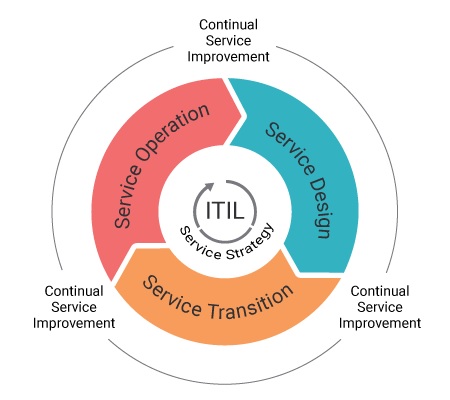Today, almost every business strives to transform its internal processes and become more technologically advanced. Therefore, one of the main priorities for the development of companies is optimization and efficiency improvement within the framework of the ITSM approach. According to Business Wire’s forecasts, by 2024, the global ITSM solutions market will grow by 7.58% and reach the level of 3.29 billion US dollars. After understanding the importance, you will surely would want to get ITIL Certification in Singapore.
What is ITSM?
ITSM (IT Service Management) is an approach to the implementation, management and improvement of IT services. Within its framework, any activity within the IT department is perceived as a service that is aimed at solving consumer problems. They can be both employees of the company, as well as its clients and business partners. IT services include any hardware, software or computing resources provided to the user. They also include the process of providing value to the consumer and the people involved in it.
ITSM Lifecycle
Working with the ITSM approach usually involves five stages, each of which is based on ITIL processes.
Service Design. The purpose of the work is to plan and create IT services offered by the organization to meet the needs of the business in accordance with the needs of the target audience. These processes include both the creation and design of new services, as well as the evaluation and improvement of existing ones.
Service Transition. After the development stage of the services is completed, it is necessary to test them to ensure the continuity of the processes. The IT department should ensure that innovations do not lead to failures. Any changes are a risk, so at this stage it is necessary to manage changes and risks.
Service Operation. At this stage, the services are implemented into the existing working environment. Although at this stage all the processes have already been tested and the problems have been eliminated, any innovations inevitably lead to failures. Therefore, the support service needs to quickly eliminate local failures and accumulate a database of similar problems to improve the quality of service.
Continuous Service Improvement. Successful implementation of new IT services should not be the final stage of transformation. Continuous improvement plays an important role in the ITSM approach. Progress can be achieved by solving emerging problems, as well as relying on feedback and customer requests.
Basic ITSM practices
The ITIL library includes 34 processes, but for a general understanding, it will be enough to tell you about the main ones.
Incident Management
In the language of ITSM, an incident is an unplanned downtime of the service. The incident management process is aimed at restoring work as quickly as possible with minimal impact on users and business.
Problem Management
This is the process of identifying and eliminating not only the root cause of the incident, but also the factors leading to it, as well as determining the best way to eliminate it.
Asset Management
To provide IT services, you need software and hardware. Asset management is the process of their physical accounting and financial control.
Change Management
This is a set of practices that help prevent malfunctions that occur as a result of making changes to the system.
Knowledge Management
The process of generating and sharing knowledge related to IT services throughout the organization (including customers and partners).
Why implement ITSM approach
Regardless of the size of the business, every organization is involved in the management of IT services in one way or another. The goal of implementing the ITSM approach is to ensure that the work of IT services primarily meets the needs of users and businesses. It also provides an optimal balance between all internal processes. Careful adherence to the principles of ITSM has a positive impact on the entire activity of the organization.
ITSM practices integration:
- Allows the IT department to respond quickly and flexibly to unexpected incidents and use this experience for further improvement.
- Ensures greater efficiency of all processes, as well as fewer failures. This helps users and businesses to increase their level of productivity.
- Increases the speed of incident resolution, reduces the number of problems and even helps to prevent them automatically. Thanks to this, the business can use the software and infrastructure more efficiently at lower costs.
- Provides greater transparency and ultimately increases the level of customer satisfaction.
How to automate ITSM processes: ITSM processes integration
At Polontech, we provide step-by-step Jira Service Desk integration as all Atlassian tools are based on best ITIL practices. Such integration makes your teams business oriented, focused on customer satisfaction and perfectly manageable.
- Install. We create a new infrastructure based on Jira Service Desk;
- Migrate. We move your data and teams to Jira Service Desk from any service software.
- Customize. We Introduce changes to the source code to extend the feature set subject to your requirements.
- Integrate. Make Jira Service Desk seamlessly work with your current software and corporate infrastructure.
You get well-organized infrastructure simple to work in. Of course, any business is different, and there’s no one solution that fits any company. But Jira and Confluence are flexible tools, which means they can be customized according to customer requirements.

